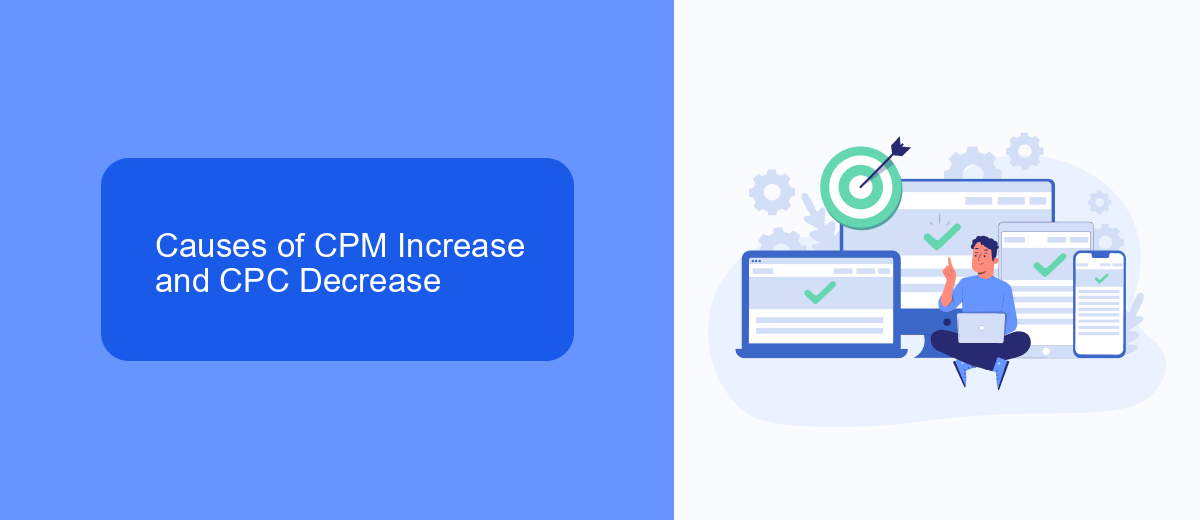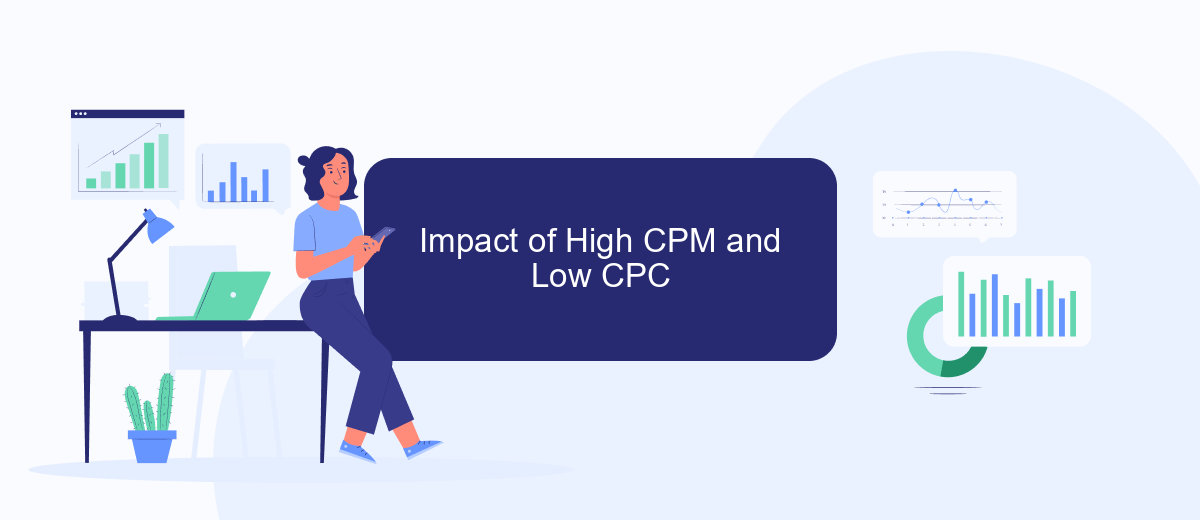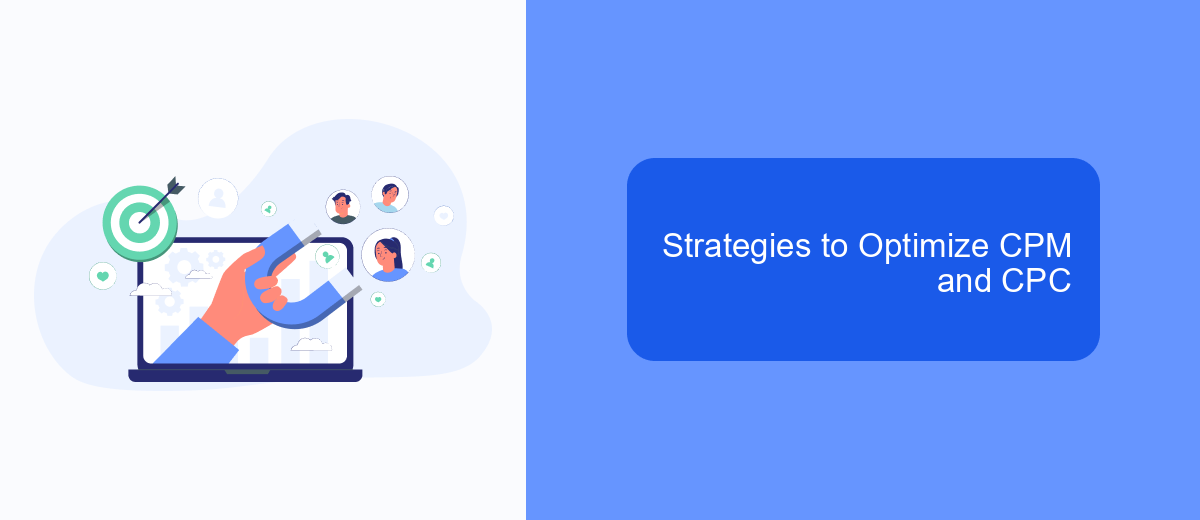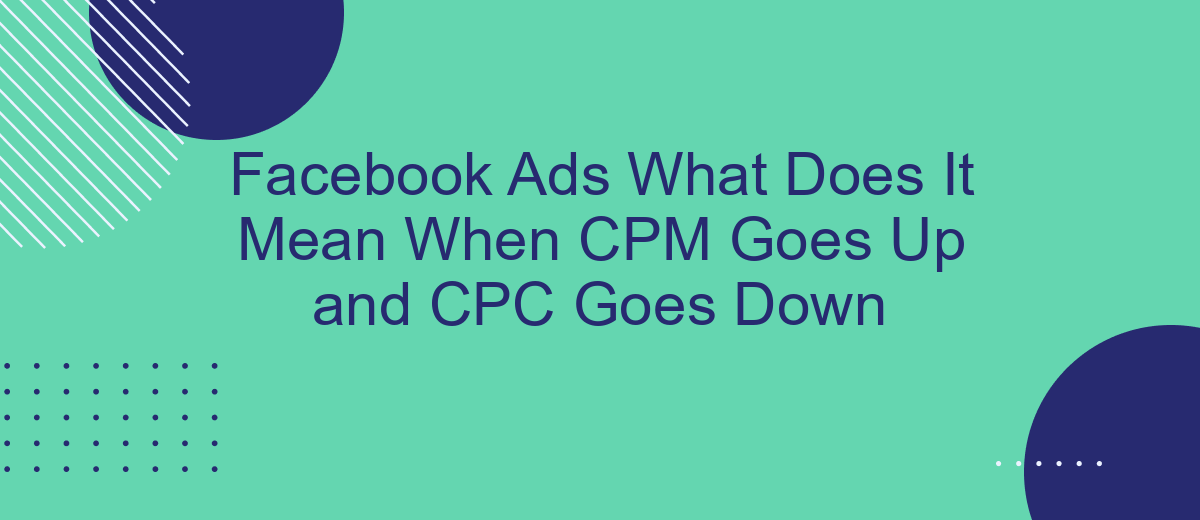Understanding the dynamics of Facebook Ads is crucial for effective digital marketing. When the Cost Per Thousand Impressions (CPM) rises while the Cost Per Click (CPC) falls, it can indicate shifting audience engagement and ad performance. This article delves into what these metrics mean, why they fluctuate, and how to optimize your campaigns for better results.
Understanding CPM and CPC Dynamics
Understanding the dynamics between CPM (Cost Per Thousand Impressions) and CPC (Cost Per Click) is crucial for optimizing your Facebook Ads campaigns. When CPM goes up and CPC goes down, it can indicate several underlying factors that impact your ad performance and budget allocation.
- Ad Relevance: High relevance scores can lead to lower CPC as your ads resonate well with the audience.
- Audience Saturation: A high CPM might suggest that your target audience is becoming saturated, requiring more budget to maintain impressions.
- Competition: Increased competition for the same audience can drive up CPM, even if your CPC remains low.
- Ad Placement: Different placements have varying costs, influencing both CPM and CPC metrics.
To effectively manage these dynamics, consider using integration services like SaveMyLeads. This platform automates data transfer between your Facebook Ads and CRM, allowing for real-time adjustments and better budget management. By leveraging such tools, you can maintain optimal ad performance and make informed decisions based on accurate data insights.
Causes of CPM Increase and CPC Decrease

When CPM (Cost Per Thousand Impressions) increases and CPC (Cost Per Click) decreases, it often indicates a shift in the advertising landscape. One reason for this could be increased competition for ad space, driving up the cost per impression. Advertisers might be willing to pay more to get their ads seen by a broader audience, thus raising CPM. On the other hand, if these ads are more effectively targeted, they may result in higher click-through rates, thereby lowering the CPC.
Another factor could be the optimization of ad campaigns through better targeting and integration tools. Services like SaveMyLeads can help streamline the process of capturing and managing leads, allowing advertisers to focus on creating high-quality, engaging ads. By automating lead generation and ensuring that ads reach the most relevant audience, these tools can improve ad performance. This results in more clicks at a lower cost, even as the competition for impressions remains high, thereby explaining the inverse relationship between CPM and CPC.
Impact of High CPM and Low CPC

When the CPM (Cost Per Thousand Impressions) increases and the CPC (Cost Per Click) decreases, it can have a mixed impact on your advertising strategy. Higher CPM means you're paying more for every thousand impressions, which could indicate increased competition or a more targeted audience. However, a lower CPC suggests that your ads are effectively driving clicks at a reduced cost, potentially improving your ROI.
- Budget Allocation: Higher CPM can quickly deplete your budget, so it's crucial to monitor and adjust your spending accordingly.
- Ad Quality: Lower CPC often reflects well-optimized ads that engage users, which can lead to better ad placement and performance.
- Audience Targeting: High CPM might mean you're reaching a more valuable audience, but it's essential to ensure this aligns with your campaign goals.
To manage these metrics effectively, consider using integration services like SaveMyLeads. This platform can automate the transfer of leads from your Facebook Ads to your CRM, ensuring you maximize the value of each click and impression. By leveraging such tools, you can maintain a balance between high CPM and low CPC, optimizing your ad spend for better outcomes.
Strategies to Optimize CPM and CPC

Optimizing CPM (Cost Per Mille) and CPC (Cost Per Click) is crucial for maximizing the efficiency of your Facebook Ads campaigns. When CPM goes up and CPC goes down, it indicates that while your ads are reaching more people, the cost per engagement is decreasing. To strike a balance and enhance both metrics, consider implementing the following strategies.
First, ensure your ad creative is highly engaging and relevant to your target audience. High-quality visuals and compelling copy can significantly impact user interaction. Additionally, regularly update and test different ad variations to identify what resonates best with your audience.
- Utilize detailed audience targeting to reach the most relevant users.
- Leverage retargeting campaigns to re-engage users who have previously interacted with your brand.
- Optimize your bidding strategy to align with your campaign goals.
- Use the SaveMyLeads service to streamline lead generation and integration processes, ensuring efficient data management.
By focusing on these strategies, you can optimize both CPM and CPC, leading to a more effective and cost-efficient advertising campaign. Regularly monitor your ad performance and adjust your tactics accordingly to maintain optimal results.
Leveraging Tools Like SaveMyLeads
Leveraging tools like SaveMyLeads can significantly enhance your Facebook Ads strategy, especially when dealing with fluctuating CPM and CPC metrics. SaveMyLeads allows you to automate and streamline the process of integrating Facebook Ads with various CRM systems, email marketing platforms, and other essential business tools. This automation ensures that your leads are captured and managed efficiently, reducing manual effort and potential errors.
By using SaveMyLeads, you can set up automated workflows that respond to changes in your ad performance metrics. For example, if your CPM goes up and CPC goes down, you can trigger specific actions such as adjusting your ad budget, modifying targeting parameters, or sending alerts to your marketing team. This proactive approach enables you to optimize your campaigns in real-time, ensuring better ROI and more effective ad spend management.
- Automate the work with leads from the Facebook advertising account
- Empower with integrations and instant transfer of leads
- Don't spend money on developers or integrators
- Save time by automating routine tasks
FAQ
What does it mean when CPM goes up but CPC goes down on Facebook Ads?
Why is my CPM increasing on Facebook Ads?
How can I lower my CPC on Facebook Ads?
What should I do if my CPM goes up and CPC goes down?
How can I automate Facebook Ads management to respond to changes in CPM and CPC?
What do you do with the data you get from Facebook lead forms? Do you send them to the manager, add them to mailing services, transfer them to the CRM system, use them to implement feedback? Automate all of these processes with the SaveMyLeads online connector. Create integrations so that new Facebook leads are automatically transferred to instant messengers, mailing services, task managers and other tools. Save yourself and your company's employees from routine work.

